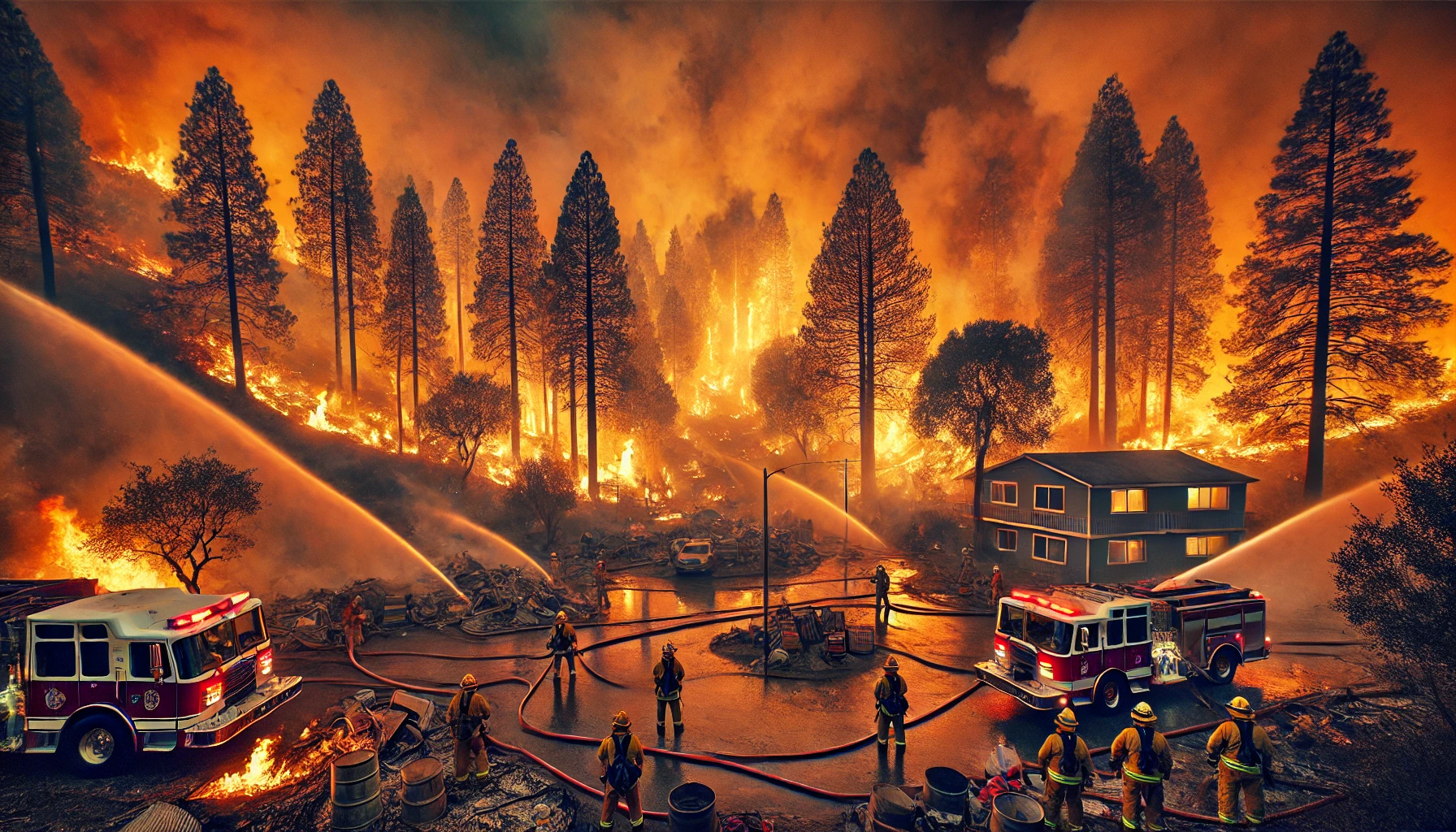California faces yet another challenge as a devastating wildfire tears through communities, leaving behind a trail of destruction. The impact of these fires on lives, property, and the environment continues to be immense, with countless buildings destroyed and thousands of residents displaced. This article sheds light on the extent of the damage, the possible causes, and the steps taken to combat this ongoing crisis.
California Wildfire: The Latest Tragedy
The recent California wildfire has left a deep scar on the region. With dry conditions and high winds, the fire spread rapidly, engulfing residential areas, commercial establishments, and wildlife habitats. Firefighters worked tirelessly to contain the blaze, but the destruction remains significant.
Key Statistics on the Latest Fire
- Buildings destroyed: Over 1,500 structures, including homes, schools, and businesses.
- Acres burned: Nearly 50,000 acres of land.
- Evacuations: More than 20,000 residents displaced.
- Casualties: Several injuries reported, along with potential fatalities still under investigation.
Impact on Communities
The latest fire has wreaked havoc across neighborhoods. Families have lost their homes, businesses face uncertain futures, and the emotional toll on affected individuals is profound. Communities are rallying to support those in need, showcasing the resilience Californians are known for.
Why Are California Wildfires So Frequent?
California’s susceptibility to wildfires is rooted in several factors:
- Climatic Conditions
Prolonged droughts, rising temperatures, and low humidity create an environment ripe for wildfires. - Human Activity
Negligence, power line failures, and even intentional acts can ignite fires. - Natural Elements
Lightning strikes and strong Santa Ana winds contribute to the rapid spread of flames. - Urban-Wildland Interface
Expanding communities into forested areas increases the likelihood of fires causing damage.
Efforts to Contain the Blaze
Responding to the latest wildfire involved coordinated efforts from multiple agencies.
Firefighting Measures Taken
- Deployment of over 2,000 firefighters with specialized equipment.
- Use of aerial water drops and fire retardants.
- Establishing firebreaks to prevent the spread.
Emergency Evacuation Protocols
- Shelters set up for displaced residents.
- Coordination with local authorities for safe evacuations.
- Alerts issued via mobile notifications and emergency broadcasts.
Environmental Damage and Wildlife Impact
The wildfire’s damage goes beyond human losses, affecting California’s fragile ecosystems. Thousands of acres of forest land have been scorched, leading to habitat destruction for native species. The air quality has deteriorated significantly due to heavy smoke, posing health risks to both humans and animals.
Rehabilitation Measures Underway
- Planting native vegetation to restore ecosystems.
- Establishing wildlife corridors for displaced animals.
- Air quality monitoring to ensure public health safety.
How to Support Wildfire Victims
If you’re looking to help, consider the following:
- Donate to Relief Funds: Trusted organizations like the Red Cross and local charities are actively supporting affected families.
- Volunteer: Assist in shelters or join cleanup efforts.
- Raise Awareness: Share verified information about the disaster and relief efforts.
Preparing for Future Wildfires
Californians are no strangers to wildfires, but preparedness can reduce risks. Here’s how residents can safeguard their properties:
Fireproofing Homes
- Use fire-resistant materials for roofs and walls.
- Clear vegetation around properties to create defensible space.
Emergency Planning
- Prepare go-bags with essential items.
- Develop evacuation plans with family members.
Community Collaboration
- Participate in local fire drills.
- Advocate for better fire management policies.
Conclusion
The latest wildfire in California is a stark reminder of the challenges posed by climate change and human expansion. While the destruction is heartbreaking, it also underscores the importance of resilience, preparedness, and community support. By taking proactive measures and working together, Californians can mitigate the risks and rebuild stronger communities in the aftermath of such tragedies.



